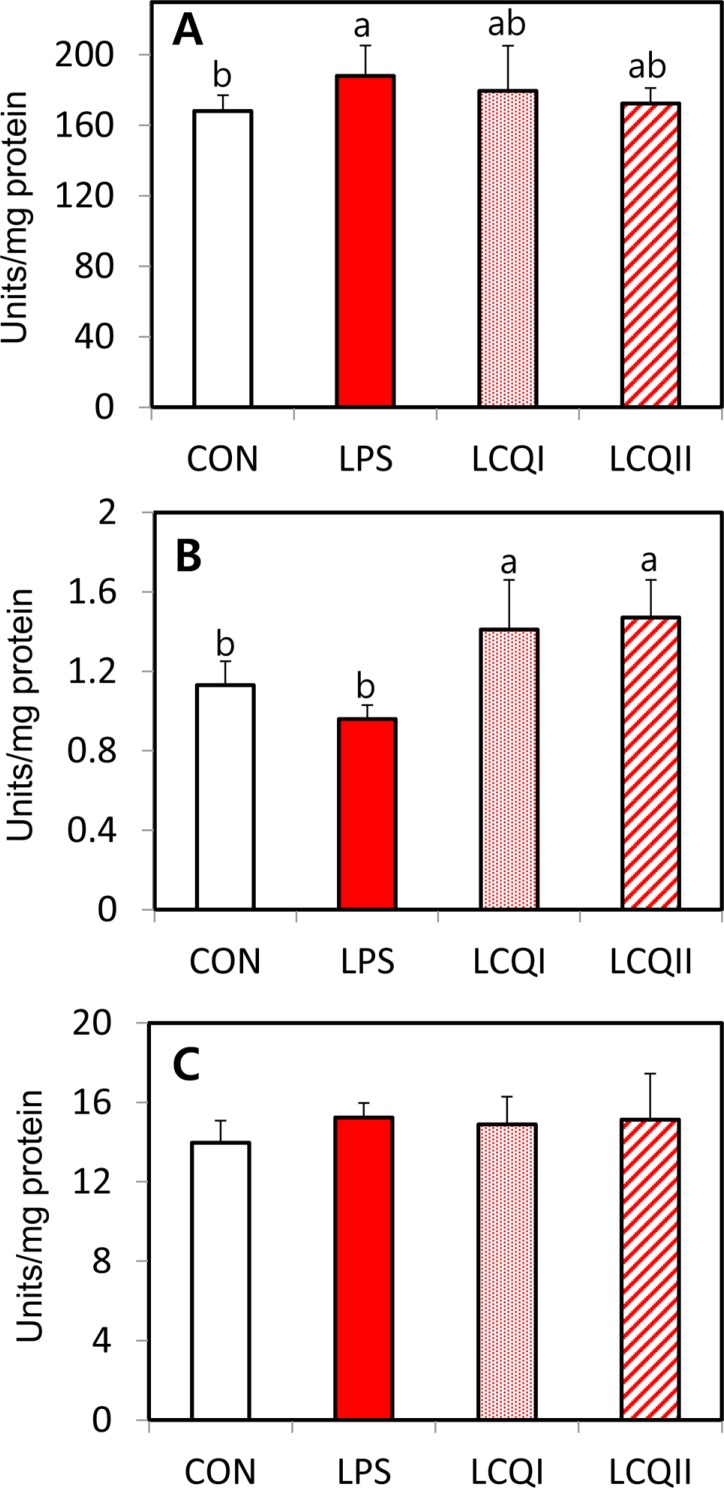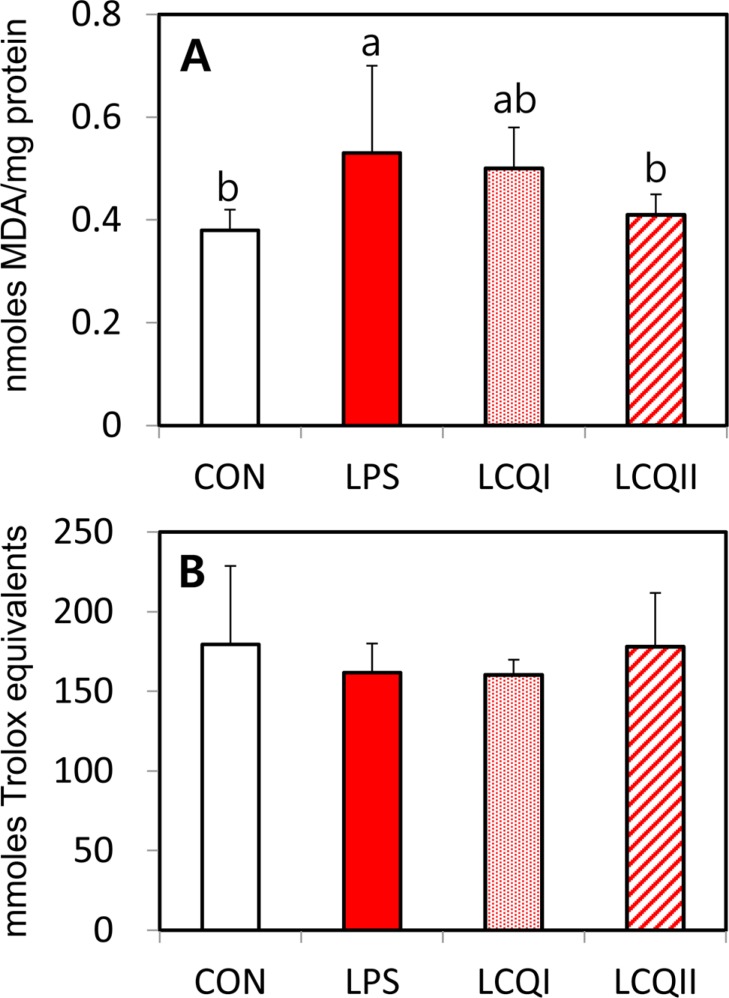1. Littarru GP. Energy and Defense. Facts and perspectives on coenzyme Q10 in biology and medicine. Roma: Casa Editrice Scientifica Internazionale;1995.
2. Quiles JL, Ochoa JJ, Battino M, Gutierrez-Rios P, Nepomuceno EA, Frías ML, Huertas JR, Mataix J. Life-long supplementation with a low dosage of coenzyme Q
10 in the rat: effects on antioxidant status and DNA damage. Biofactors. 2005; 25:73–86. PMID:
16873932.
3. Acosta MJ, Vazquez Fonseca L, Desbats MA, Cerqua C1, Zordan R, Trevisson E, Salviati L. Coenzyme Q biosynthesis in health and disease. Biochim Biophys Acta. 2016; 1857(8):1079–1085. PMID:
27060254.

4. Turunen M, Olsson J, Dallner G. Metabolism and function of coenzyme Q. Biochim Biophys Acta. 2004; 1660:171–199. PMID:
14757233.

5. Littarru GP, Tiano L, Belardinelli R, Watts GF. Coenzyme Q(10), endothelial function, and cardiovascular disease. Biofactors. 2011; 37(5):366–373. PMID:
21674640.

6. Yang YK, Wang LP, Chen L, Yao XP, Yang KQ, Gao LG, Zhou XL. Coenzyme Q
10 treatment of cardiovascular disorders of ageing including heart failure, hypertension and endothelial dysfunction. Clin Chim Acta. 2015; 450:83–89. PMID:
26254995.
7. Kamzalov S, Sumien N, Forster MJ, Sohal RS. Coenzyme Q intake elevates the mitochondrial and tissue levels of Coenzyme Q and alpha-tocopherol in young mice. J Nutr. 2003; 133(10):3175–3180. PMID:
14519806.
8. Bullón P, Román-Malo L, Marín-Aguilar F, Alvarez-Suarez JM, Giampieri F, Battino M, Cordero MD. Lipophilic antioxidants prevent lipopolysaccharide-induced mitochondrial dysfunction through mitochondrial biogenesis improvement. Pharmacol Res. 2015; 91:1–8. PMID:
25447593.

9. James AM, Smith RA, Murphy MP. Antioxidant and prooxidant properties of mitochondrial Coenzyme Q. Arch Biochem Biophys. 2004; 423(1):47–56. PMID:
14989264.

10. Niklowitz P, Menke T, Andler W, Okun JG. Simultaneous analysis of coenzyme Q
10 in plasma, erythrocytes and platelets: comparison of the antioxidant level in blood cells and their environment in healthy children and after oral supplementation in adults. Clin Chim Acta. 2004; 342:219–226. PMID:
15026284.
11. Shekelle P, Morton S, Hardy ML. Effect of supplemental antioxidants vitamin C, vitamin E, and coenzyme Q10 for the prevention and treatment of cardiovascular disease. Evid Rep Technol Assess (Summ). 2003; (83):1–3.
12. Rötig A, Appelkvist EL, Geromel V, Chretien D, Kadhom N, Edery P, Lebideau M, Dallner G, Munnich A, Ernster L, Rustin P. Quinone-responsive multiple respiratory-chain dysfunction due to widespread coenzyme Q
10 deficiency. Lancet. 2000; 356(9227):391–395. PMID:
10972372.
13. Novoselova EG, Lunin SM, Novoselova TV, Khrenov MO, Glushkova OV, Avkhacheva NV, Safronova VG, Fesenko EE. Naturally occurring antioxidant nutrients reduce inflammatory response in mice. Eur J Pharmacol. 2009; 615:234–240. PMID:
19463810.

14. Maruyama H, Furukawa K, Onda M. Effect of coenzyme Q
10 on endotoxin induced hepatocyte injury modulation of endotoxin-activated polymorphonuclear neutrophils. Nihon Ika Daigaku Zasshi. 1995; 62(3):271–282. PMID:
7615699.
15. Frei B, Kim MC, Ames BN. Ubiquinol-10 is an effective lipid-soluble antioxidant at physiological concentrations. Proc Natl Acad Sci U S A. 1990; 87(12):4879–4883. PMID:
2352956.

16. Sohal RS, Kamzalov S, Sumien N, Ferguson M, Rebrin I, Heinrich KR, Forster MJ. Effect of coenzyme Q
10 intake on endogenous coenzyme Q content, mitochondrial electron transport chain, antioxidative defenses, and life span of mice. Free Radic Biol Med. 2006; 40(3):480–487. PMID:
16443163.
17. Livak KJ, Schmittgen TD. Analysis of relative gene expression data using real-time quantitative PCR and the 2(-Delta Delta C(T)) Method. Methods. 2001; 25(4):402–408. PMID:
11846609.
18. Kupfer D, Levin E. Monooxygenase drug metabolizing activity in CaCl
2-aggregated hepatic microsomes from rat liver. Biochem Biophys Res Commun. 1972; 47(3):611–618. PMID:
4402636.
19. Tappel AL. Glutathione peroxidase and hydroperoxides. Methods in Enzymol. 1978; 52:506–513. PMID:
672654.
20. Melega S, Canistro D, De Nicola GR, Lazzeri L, Sapone A, Paolini M. Protective effect of Tuscan black cabbage sprout extract against serum lipid increase and perturbations of liver antioxidant and detoxifying enzymes in rats fed a high-fat diet. Br J Nutr. 2013; 110(6):988–997. PMID:
23433361.

21. Bidlack WR, Tappel AL. Damage to microsomal membrane by lipid peroxidation. Lipids. 1973; 8(4):177–182. PMID:
4348615.

22. Giannini E, Botta F, Fasoli A, Ceppa P, Risso D, Lantieri PB, Celle G, Testa R. Progressive liver functional impairment is associated with an increase in AST/ALT ratio. Dig Dis Sci. 1999; 44(6):1249–1253. PMID:
10389705.
23. Li Q, Liu Y, Che Z, Zhu H, Meng G, Hou Y, Ding B, Yin Y, Chen F. Dietary L-arginine supplementation alleviates liver injury caused by Escherichia coli LPS in weaned pigs. Innate Immun. 2012; 18(6):804–814. PMID:
22441699.

24. El-Tanbouly DM, Abdelsalam RM, Attia AS, Abdel-Aziz MT. Pretreatment with magnesium ameliorates lipopolysaccharide-induced liver injury in mice. Pharmacol Rep. 2015; 67(5):914–920. PMID:
26398385.

25. Ali SA, Faddah L, Abdel-Baky A, Bayoumi A. Protective effect of L-carnitine and coenzyme Q
10 on CCl
4-induced liver injury in rats. Sci Pharm. 2010; 78(4):881–896. PMID:
21179323.
26. Fouad AA, Jresat I. Hepatoprotective effect of coenzyme Q
10 in rats with acetaminophen toxicity. Environ Toxicol Pharmacol. 2012; 33(2):158–167. PMID:
22222558.
27. Bian K, Murad F. Diversity of endotoxin-induced nitrotyrosine formation in macrophage-endothelium-rich organs. Free Radic Biol Med. 2001; 31(4):421–429. PMID:
11498275.

28. Fridovich I. Superoxide dismutase. Adv Enzymol Relat Areas Mol Biol. 1974; 41:35–40. PMID:
4371571.

29. Matés JM. Effects of antioxidant enzymes in the molecular control of reactive oxygen species toxicology. Toxicology. 2000; 153:83–104. PMID:
11090949.

30. Chauhan DP, Gupta PH, Nampoothiri MR, Singhal PC, Chugh KS, Nair CR. Determination of erythrocyte superoxide dismutase, catalase, glucose-6-phosphate dehydrogenase, reduced glutathione and malonyldialdehyde in uremia. Clin Chim Acta. 1982; 123:153–159. PMID:
6749335.

31. Nishimura N, Ito Y, Adachi T, Hirano K, Sugiura M, Sawaki S. Enzyme immunoassay for cuprozinc-superoxide dismutase in serum and urine. J Pharmacobiodyn. 1982; 5(6):394–402. PMID:
6750078.

32. Rossol M, Heine H, Meusch U, Quandt D, Klein C, Sweet MJ, Hauschildt S. LPS-induced cytokine production in human monocytes and macrophages. Crit Rev Immunol. 2011; 31(5):379–446. PMID:
22142165.

33. Chou ST, Peng HY, Hsu JC, Lin CC, Shih Y. Achillea millefolium L. essential oil inhibits LPS-induced oxidative stress and nitric oxide production in RAW 264.7 Macrophages. Int J Mol Sci. 2013; 14(7):12978–12993. PMID:
23797659.

34. Spolarics Z. Endotoxin stimulates gene expression of ROS-eliminating pathways in rat hepatic endothelial and Kupffer cells. Am J Physiol. 1996; 270:G660–G666. PMID:
8928796.

35. Sena CM, Nunes E, Gomes A, Santos MS, Proença T, Martins MI, Seiça RM. Supplementation of coenzyme Q
10 and alpha-tocopherol lowers glycated hemoglobin level and lipid peroxidation in pancreas of diabetic rats. Nutr Res. 2008; 28(2):113–121. PMID:
19083397.
36. Ahmadvand H, Tavafi M, Khosrowbeygi A. Amelioration of altered antioxidant enzymes activity and glomerulosclerosis by coenzyme Q
10 in alloxan-induced diabetic rats. J Diabetes Complications. 2012; 26(6):476–482. PMID:
22795334.
37. Lee CK, Pugh TD, Klopp RG, Edwards J, Allison DB, Weindruch R, Prolla TA. The impact of alpha-lipoic acid, coenzyme Q
10 and caloric restriction on life span and gene expression patterns in mice. Free Radic Biol Med. 2004; 36(8):1043–1057. PMID:
15059645.










 PDF
PDF ePub
ePub Citation
Citation Print
Print


 XML Download
XML Download